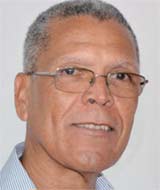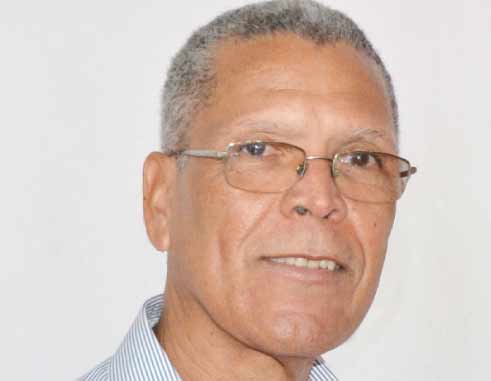
AS we return to examining Teo Ah Khing, we might recall from earlier articles that Mr. Ah Khing is an architect and the owner and Managing Director of TAK Consultants, an architectural consulting firm registered in Malaysia. TAK Consultants has reportedly undertaken urban planning work in Malaysia and has more recently gained recognition for work done in Dubai, having established an office there.
For us in St. Lucia who have been introduced to Ah Khing because of his interest in the establishment of a horse racing facility here, it is his work in the development of the Meydan City horse racing complex in Dubai, as well as his often termed “landmark” equestrian development, the Tianjin Equine Culture City, which have been presented as evidence of his architectural talent and success as a developer. These have been promoted both by DSH and by Invest St. Lucia. We have also learned that Ah Khing and DSH are associated with the China Horse Club, membership of which is limited and starts at a fee of US$1m.
We also now know that seven years after having announced that Tianjin Equine Culture City project, and notwithstanding that it continues to be promoted as DSH’s “landmark” project on the China Horse Club website, that project remains a proposal on paper. Ah Khing is now reportedly engaged with the development of a horse breeding industry in Ordos, China, and with the management of the racecourse at that location.
We have been told by Invest St. Lucia that the project proposed for St. Lucia “will be able to house more than 1,000 racehorses”, while Minister Felix has indicated that he had been told that every horse would require 4 to 5 persons to take care of it. Faced with our problem of high unemployment, this has led to an embrace of this project by some, although in an earlier article, “Shovelers of Horse Manure”, the quality and sustainability of the jobs to be generated by this venture was questioned.
But as we recently became familiar with that officially non-binding, but thoroughly strangulating and binding Framework Agreement for this project, we found that there is no commitment or requirement that DSH import, or provide, or maintain a single horse in Vieux Fort. So that while the technocrats and politicians may be under the impression that the facility to be built can, on completion (eventually?) house 1,000 horses, there is nothing in the Framework or Supplementary Agreements which requires that 1, 10, 100, or 1,000 horses be maintained at that racetrack facility in Vieux Fort. No horses, therefore, no jobs.
Even the number of jobs generated by each horse is questionable as while the quoted number of 4 or 5 jobs per horse has previously been reported as coming from a Chinese official of the Ordos centre and may account for our government being of that impression, this is not the relationship which exists in the Irish horse racing industry.
According to a report on the Irish industry entitled “Analysis of the economic impact of the Irish Thoroughbred Horse Industry” (The Report), commissioned by the Irish Thoroughbred Breeders’ Association and published in 2009, with a thoroughbred population of 12,119 horses in 2008, the industry employed 22,084 persons, for a ratio of 1.8 persons per horse.
Even that figure is misleading, as it includes those employed in the breeding and betting sectors, a total of 13,105 (The Report, Summary, pg. 29). If those persons are omitted, then the number of jobs generated by each horse falls to 0.74. Those jobs include jockeys, trainers, stable staff, administration, catering and security, education, farriers (horseshoe fitters), feed producers, and jobs in transport, for example, as well as jobs in auxillary services. Auxillary services include broadcasting, equine health care and nutrition, insurance, media and publicity executives, and captures jobs in various other activities associated with the industry.
And if only those persons directly employed in the horse racing sector are considered, i.e. trainers, jockeys, stable staff, administration, education and training, i.e. the type of jobs which we might expect to be generated in St. Lucia, the number of jobs generated per horse falls to 0.45 (The Report, Table 2.11). So that if this project were to actually go ahead and 100 horses were initially imported into St. Lucia, we can expect to see about 45 jobs generated as a result. And 20 to 25 years from now, or whenever that aspect of the project is complete and 1,000 horses are stabled in Vieux Fort, between 450 and 740 jobs are likely to be generated by this horse racing activity. Yet, here we are, anticipating 4,000 to 5,000 jobs.
We are living with an illusion, an illusion which we have created ourselves, although Teo Ah Khing may have facilitated its development with the publicity associated with his equine industry exploits and the trip organized to his Ordos Festival last August for our Prime Minister and government officials. But Teo Ah Khing has not formally contributed anything to this illusion and the agreements which he has signed with the government do not suggest any of the components on which our illusion is based.
Teo Ah Khing and DSH have made no commitment to keeping horses in Vieux Fort, to constructing any number of stables, or to creating any number of jobs. Their only commitment is to the construction of a racetrack and while it is assumed that DSH will hold racing festivals there, there is no commitment on their part to doing so, either, or any suggestion of a frequency at which such festivals will be held.
So that even when at the sod-turning ceremony for the project last November, our Prime Minister announced that “We intend to make sure that the first international horse racing event will take place here by next November (2017)”, that intention can only be seen in the context of our own illusion. That illusion is not in keeping with the Framework Agreement signed on July 29, 2016 which commits the government to establishing an “Equine Disease Free Zone” and requires that the relevant agencies necessary for this be mobilized within 24 months of the Agreement being signed.
Six months later, at that Invest St. Lucia meeting in February 2017, the Veterinary Department of the Ministry of Agriculture did not have the technical information necessary for establishing the EFDZ, while the Supplemental Agreement requires that St. Lucia seeks membership of the World Organization for Animal Health (OIE) and adopts its standards and guidelines.
As indicated under the heading “Disease surveillance and laboratory diagnosis” in the OIE’s publication, “Framework for establishment of an Equine Disease Free Zone”, even after the EFDZ is established, “the status regarding the diseases listed for the EFDZ must be documented for at least three years for the free status to be established”. All of this suggests that we are at least three, and possibly as many as five years, away from acquiring EFDZ status, only after which time can horses be imported to and be exported from St. Lucia. Yet we are given the impression that international horse races are going to be held in St. Lucia within the next eight months.
So, firstly, the Supplemental Agreement is amended so that the racetrack is no longer to be funded by the Citizenship by Investment Programme, although even here, the original text “Phase 1” is scratched off to be replaced by “racetrack”. Presumably, this means that this racetrack is now a stand-alone investment and represents an injection of investor funds by Teo Ah Khing, stifling any further criticism of this activity.
Yet no one can tell us what is to be constructed when the term “racetrack” is used, or the level of funds to be invested. And we know that it is not a stand-alone project as the Supplementary Agreement makes it very clear that the racetrack remains part of the overall project and there is no doubt that whatever Ah Khing spends on the racetrack will be recovered elsewhere from the project.
But a new twist has emerged as, speaking recently on the matter of training, the Prime Minister indicated that horses had been identified from within the region. He did not elaborate on whether or not those horses were only for training of local horsemen or for racing also, but we wait to see.
We wait to see as the Caribbean has a long tradition of horse racing, with horses being regularly moved between Trinidad, Barbados and Jamaica where the turf clubs, racing, and legal betting are well established. A horse from St. Kitts has reportedly raced in Trinidad, as has one reportedly from St. Lucia in the 2011 Breeders’ Cup held at the Santa Rosa Race Track in Arima, Trinidad. Antigua has some horseracing as well.
We wait to see as, if all Ah Khing wanted to achieve was the televising of international horseracing back to China, then he could simply have televised the races from the existing “meets” at our regional tracks and saved himself the trouble of having to build and maintain a racetrack himself. Better than that, he could even have leased one or all of our regional racetracks and staged his own series of “festivals” at them which he could then have televised back to China.
We wait to see because if it is horse racing which is supposed to attract the hordes of Chinese who are supposedly going to invest in the villas and hotels and casino to be built here, what is going to differentiate St. Lucia from the other islands when the horse racing here is the same as it is there?
We might even be forgiven for forming all of these impressions of what Ah Khing is planning to undertake in St. Lucia if we had not been made to recognize that whatever dream of horse racing that Ah Khing himself may have, he has yet to convert it into a viable business plan. That leaves us and our passport money. And so, what Ah Khing has not been able to achieve through his vaunted technical prowess, he is now planning to achieve through our own greed and our desperation.
We have created our own illusion of the prospects for development of this horse racing facility in Vieux Fort and our own illusion of the potential benefit for unemployed persons residing in the south. It is a 1,000 horses and 4 to 5 thousand jobs illusion and it will ultimately prove to be an expensive illusion for us to escape from.
Teo Ah Khing is, however, operating under no illusions and in the unlikely event that a sufficient number of St. Lucian passports can be sold to finance his dream, he will end up being the owner of 700 or 800 acres of the lands of Vieux Fort and all that is to be built on them. And he will not have spent one cent of his own money. Even worse, we would have paid him ourselves for designing what has to be the greatest illusion ever forced onto a St. Lucian public.
We can continue to delude ourselves but we cannot maintain this illusion, much as we continue to promote elusions in its defence. But who really cares when all we have to do is to sell a few thousand more passports?
Next week, a look at Teo Ah Khing’s track record in construction.












I used to enjoy your writings, but of late you repeating your self. I find you writing/saying the same thing over and over. You state the problem, so offer the solution you are an engineer for crying out loud.
David,
Don’t be put off from speaking the truth, even if you repeat yourself!
Before criticizing you, NY should have revealed what he/she has done or even said to counteract the criminality of ALL the St. Lucian governments that have so far usurped the will of the people, and fattened their pockets in the process.